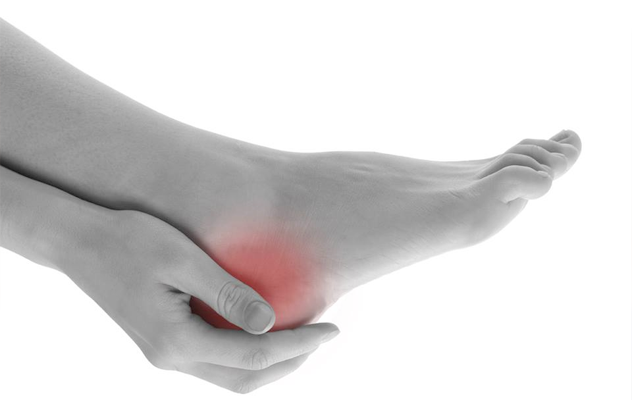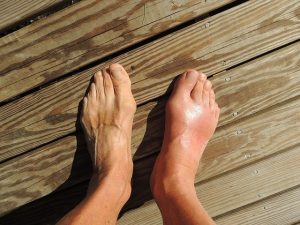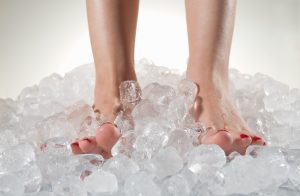Heel pain is one of the most common problems that I see in the clinic and can be a very debilitating condition
Probably the most common type of heel pain is Plantar Fasciitis or as it is sometimes known as Calcaneal heel spur syndrome. Although heel spurs are often visible on X-ray this is not always diagnostic as they are also often seen on the non symptomatic foot too, and diagnosis is usually on history and symptoms. This condition is characterized by increased pain with the first steps in the morning or when standing after a prolonged period of sitting. It can be in one or both feet. There are many treatments available for this condition depending on the severity of the condition the length of time the individual has had the problem and level of activity, and can vary from stretching and strapping to orthotics and even night splints.
Achilles tendonitis is usually a sports injury or can be caused by over use or even foot ware. Pain is often worse on rising in the morning and exacerbated by activity. Treatment, laser treatment is very effective here and stretching is important also altering foot ware can also help.
Hagland’s deformity or Pump bumps as they are sometimes known are boney lumps at the back of the heel on the outside. Caused by the foot rubbing on foot ware the body attempts to protect the area laying down more bone. Sometimes there is an associated fluid filled sac called a bursa associated with this condition. The area can become inflamed and very sore in shoes. Treatment, controlling the motion of the foot, padding and laser work well, although surgical intervention is sometimes called for.
Bursa can also be a problem behind the Achilles tendon and in the fat pad of the heel. If these bursa become inflamed they can be painful on activity. Once again laser can be very good here as can padding or an accommodating insole.
Sever’s disease is a heel condition only seen in children and adolescents, eight to about 16 years old and is quite common. Usually seen in very sporty individuals, pain is exacerbated by exercise and often is only present when running or jumping. Often Sever’s coincides with a grown spurt as the leg bone grows and the Achilles tendon pulls on the heel bone pulling the growth plate of the bone away and causing localized avascular necrosis with resultant pain on exercise. Orthotics and stretching work very well here enabling the child recover fully and return to the sports they enjoy.
There are many conditions which cause heel pain from tumors, fractures to simple splits. I have just covered a few examples here.









